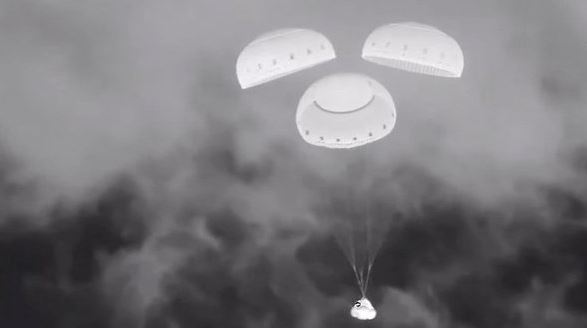Boeing’s inaugural astronaut mission concluded Friday night with an empty Starliner capsule landing at White Sands Missile Range in New Mexico, while two test pilots remain in space until next year. NASA deemed their return aboard the Starliner too risky following issues with the spacecraft.
The capsule, which left the International Space Station six hours earlier, descended through the desert darkness on autopilot. This quiet landing wrapped up a dramatic mission that had been plagued by thruster failures and helium leaks since its launch in June. Boeing’s astronauts, Butch Wilmore and Suni Williams, were originally set to return in mid-June, but the ongoing technical problems delayed their homecoming.
Despite Boeing’s assurances that extensive testing had resolved the issues, NASA overruled the decision and booked a return flight with SpaceX. Their SpaceX mission is scheduled for late September, leaving the astronauts in orbit until February—eight months after their original mission was supposed to conclude.
As Starliner departed the station, Williams radioed, “She’s on her way home,” watching the spacecraft undock and disappear into space. Cameras on the space station and NASA aircraft captured the capsule’s reentry, which was met with cheers despite minor thruster problems during descent. NASA’s Commercial Crew Program manager Steve Stich called the landing a “bull’s-eye” but stood by the decision to leave the astronauts onboard the station.
Boeing did not participate in NASA’s post-landing briefing, but company executives supported NASA’s ruling, stating in a note to employees, “We support NASA’s decision for Starliner and are proud of how our team and spacecraft performed.”
Starliner’s crew demo marks the end of a long journey filled with delays and setbacks. Since the retirement of NASA’s space shuttle program, both Boeing and SpaceX were contracted to provide orbital transport services. Boeing’s first test flight in 2019 was plagued with problems, leading to a repeat mission in 2022, which also uncovered further issues. The total cost of repairs has exceeded $1 billion.
SpaceX, which has flown nine successful crew missions for NASA since 2020, will launch its next flight later this month. The Dragon capsule will carry two astronauts on a half-year expedition, reserving seats for Wilmore and Williams for the return journey.
The delayed mission has seen Wilmore and Williams become full-time crew members aboard the International Space Station, joining seven others to continue their duties in space.
NASA remains committed to having two competing companies transport astronauts, aiming for both Boeing and SpaceX to launch alternating missions until the space station’s planned retirement in 2030. However, Boeing now faces significant pressure to catch up, with no clear timeline for its next astronaut flight.
Starliner will return to NASA’s Kennedy Space Center for further analysis as engineers assess the next steps for Boeing’s spacecraft.
Key Points:
- Boeing’s First Astronaut Mission Concludes: Boeing’s Starliner capsule landed empty at White Sands Missile Range after NASA deemed it too risky for the astronauts to return aboard.
- Astronauts Remain in Space: Test pilots Butch Wilmore and Suni Williams will stay on the International Space Station until early next year, returning via a scheduled SpaceX flight.
- Mission Plagued by Technical Issues: The June mission faced thruster failures and helium leaks, delaying the astronauts’ return for months.
- NASA Overrules Boeing: Despite Boeing’s insistence that Starliner was safe, NASA opted for a SpaceX flight due to ongoing concerns about the spacecraft.
- Successful Capsule Landing: Starliner returned safely to Earth, despite minor thruster issues during descent, landing on target in New Mexico.
- Boeing’s Delays and Setbacks: Starliner’s journey has been marked by numerous technical challenges, resulting in costly repairs exceeding $1 billion.
- SpaceX to Handle Return Mission: SpaceX will launch a mission later this month to bring Wilmore and Williams back, alongside other astronauts on a half-year expedition.
- Future of Boeing’s Space Program: NASA remains committed to Boeing’s involvement, but it’s unclear when the next Starliner mission will take place.



